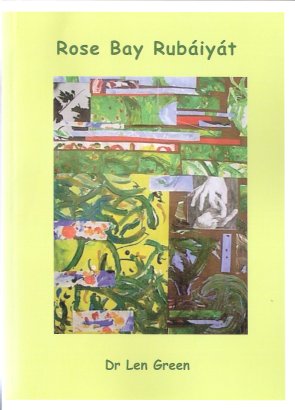A Persian poet. Aldrich, Thomas Bailey. The Atlantic Monthly, 41 (1878) 246 (April), pp. 421–426
Archives
Mr. Edward FitzGerald’s translations
Mr. Edward FitzGerald’s translations. Perry, Thomas Sergeant. The Atlantic Monthly, 39 (1877) 236 (June), pp. 730-738
Les quatrains du Khéyam, traduits du Persan
Les quatrains du Khéyam, traduits du Persan. Michaux, C. L’Investigateur, 9 (1869) 4, pp. 27-30
Les quatrains de Khèyam, traduits du Persan
Les quatrains de Khèyam, traduits du Persan. Norton, Charles Eliot. North American Review, 59 (1869) 225 (October), pp. 565–584
Os Rubaiyat de Manuel Bandeira e de Torrieri Guimarães
Os Rubaiyat de Manuel Bandeira e de Torrieri Guimarães. Denise Botman.
In: Revista InComunidade, Edição de ABRIL de 2017.
Summary:
This article discusses a number of peculiarities in the translations into Portuguese by Bandeira and by Guimarães, both said to be based on the French translation by Toussaint. After examination and comparison of the text it appears that the translation by Guimarães is not based on Toussaint, as claimed by the translator but on Bandeira, which is considered to be an example of plagiarism or fraud, or both.
Intersemiotic translations of Rubaiyat of Omar Khayyam by Iranian and Thai illustrators: a comparative study
Intersemiotic translations of Rubaiyat of Omar Khayyam by Iranian and Thai illustrators: a comparative study. Saber Atash Nazarloo, Hossein Navidinia.
Asia Pacific Translation and Intercultural Studies, 5 (2018) 1, p.p. 72-81.
“Bois du vin …”. English, French and German translations in Persian polyglot editions of the Rubáiyát of Omar Khayyám
“Bois du vin …”. English, French and German translations in Persian polyglot editions of the Rubáiyát of Omar Khayyám. Jos Coumans.
In: Persica, 2017-2018, Vol. 26, p. 103-163.
Rose Bay Rubáiyát: Khayyám and beyond
Rose Bay Rubáiyát: Khayyám and beyond. Len Green. Rosebay, 2012. 120 p. ISBN: 9780975179192.
Foreword, Phillip Adams ; cover illustration, Beryl Green.
Summary
A selection of quatrains about wine by various authors based on The Rubaiyyat of Omar Khayyam.
Part one. Moving fingers: an abstract on the Rubáiyát of Omar Khayyám of Naishápúr with verse by various authors and selected quotations.
Part two. The rhubarb art of Old Mark Chyam of Rose Bay: original quatrains and paraphrases.
Translating Translations …
Translating Translations: A study of Ngā Rūpaiaha o Oma Kaiama, a Māori translation of the English version of the Rubáiyát of Omar Khayyám. Hariru Te Aroha Roa. University of Waikato, 2013.
Analyse critique des transformations stylistiques dans les traductions des XIXe et XXe siècles des Robâïât d’Omar Khayyám
Analyse critique des transformations stylistiques dans les traductions des XIXe et XXe siècles des Robâïât d’Omar Khayyám. Exploration des quatrains communs chez FitzGerald, Arberry, Nicolas et Lazard. Bentolhoda Nakhaeï. Paris, 2016.
[Thèse de doctorat en Études anglophones]
Summary:
This thesis aims to carry out a meticulous analysis of the transformation of form and meaning in the rendition of the Rubáiyát in four significant 19th and 20th-century translations—two in English and two in French. The translators of the selected translations are Edward FitzGerald, Arthur John Arberry, Jean-Baptiste Nicolas, and Gilbert Lazard. The translations produced by these translators have offered opportunities of investigation within linguistic boundaries. In fact, one may wonder if the translators have transformed the meaning and the form of the Persian quatrains.
